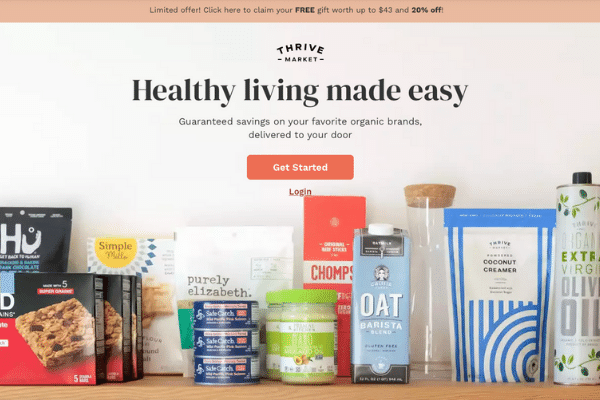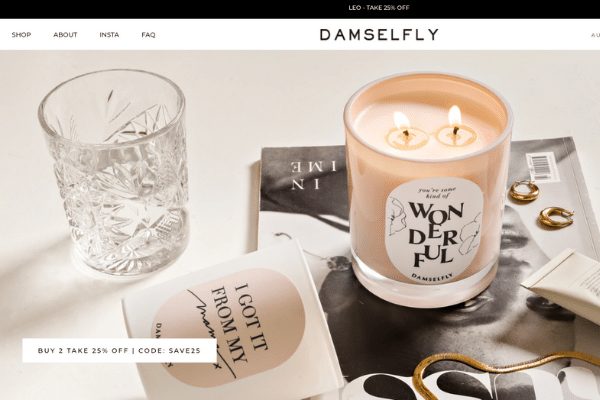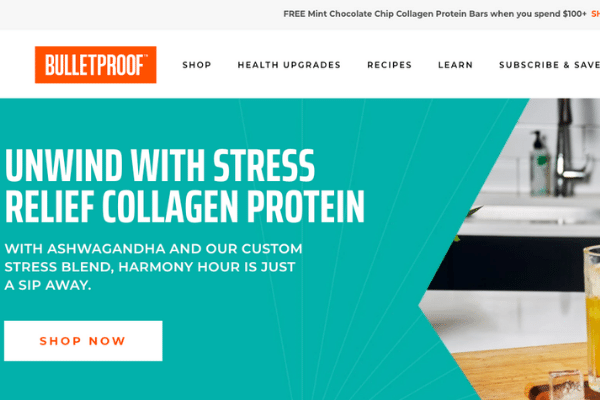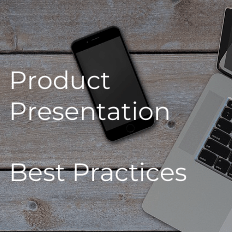Buying online is everything in 2021, which means online sales are booming and only trending upward. The number of people shopping online is growing at record speeds and reached nearly 4 trillion in 2020. The amount of online shoppers in the United States alone is expected to reach 300 million by 2023. With numbers like these, you can expect an increase in traffic to your eCommerce website, making its design a top priority as you move forward in 2021 and beyond. With so many people shopping online, competition is steep. You need to arm yourself with the right strategy to architect an eCommerce design that will entice new users, turn them into lifetime customers, and keep them coming back.

How do you do it? There are tons of companies out there offering similar products to yours, so what sets you apart? What will keep users from hitting your homepage and bouncing to one of your competitors?
Design is key. You want your website design to have a second-to-none look and feel. But it’s more than that. Your eCommerce site not only needs to look good, but it also has to give your customers an experience that encompasses ease of use, excellent customer service, trust, and much, much more. How do you create an eCommerce website design unique to your business, that is optimized for conversions, while also giving your shoppers everything they need? If this seems like a daunting task leaving you with beads of anxious sweat, as you think, “Where do I even begin?”, relax! We’re going to cover everything you need to know to get you on the path to eCommerce design success in 2021.
First, let’s take a look at some of the amazing top eCommerce sites leading by example. We’ll examine the different aspects that have led to their success, then we’ll explore how you can implement similar tactics to your eCommerce website.
Leading eCommerce Websites
Amazon

Amazon leads the way as one of the best eCommerce websites. This comes as no surprise since the tech giant is the largest in the world and dominates when it comes to eCommerce innovation. Yes, they are well known and have a great brand reputation, but they’ve gotten to this point because they check all the boxes of a great eCommerce site: straightforward user interface, responsive and mobile-friendly, fast loading, easy checkout, and trouble-free product discoverability.
All of these may seem like no-brainers, but it’s because Amazon gets the basics exactly right that they remain number one. This is something to take note of when designing your site. Focus on perfecting the basics so you give your site a solid foundation to grow on as you scale. If you try to get ahead of yourself before you’ve taken care of the necessities, you could end up lacking on what’s important to your users.
Thrive Market

Thrive Market, the online grocer delivering subscription-based, healthy, and eco-friendly food and home products, is an all-around eCommerce winner, especially standing out amidst the pandemic. Keep in mind, it’s not always about the product, but the offer. If Thrive Market’s products can be found at Whole Foods, Sprouts, and the specialty section of your local grocer, then why do customers choose them? It’s the way they position their offer on their retail website that is unique.
They offer their subscribers a Costco-like model, with a fresh, organic selection they can feel good about purchasing for their home and body. Where do they win? Their website delivers exactly what users want in an online shopping experience: personalization, speed, guided shopping, and a simple experience.
The number one thing they do extremely well is create virtual, personalized grocery stores for their shoppers, taking out the hassle of searching product by product. They eliminate the annoying guesswork that often comes with online shopping while presenting their users with a curated set of products they know they’ll love. Uncomplicating a usually tedious task your users face will get them to take notice.
Damselfly

Damselfly is a female-focused, Australian lifestyle brand that curates a set of beautifully designed products that combine humor and style. Product display on your site plays a huge role in grabbing users’ attention. They understand this and take product display to the next level, using authentic imagery true to their brand. 93% of consumers consider product images a key deciding factor in their purchasing decision.
Photo quality is essential, but more than photo quality alone are the types of images you choose to display and whether or not your target audience connects to these images. You want to use images that help your customers visualize the product in their daily lives, evoke emotional reactions, and make them feel understood. This is where Damselfly exceeds.
They know their target market and clearly display their products in a way they know will appeal to them. Other than visual appeal, they use their homepage to highlight their social presence, showcasing posts from their Instagram feed to connect with their audience in a way they prefer. For example, they know the demographic of their shoppers are heavy social media users and they use this to their advantage.
They get the most out of their homepage through these means and leverage it to highlight their competitive differentiators. Many companies offer products similar to Damselfly, but they use presentation to set them apart.
Bulletproof

Bulletproof offers a collection of products to optimize focus and brainpower to help their customers feel their best every day. They have a niche segment of customers focused on nutrition, specifically the Keto diet, and they tailor their eCommerce site and product display in a way that will appeal to them. Their design is crisp, modern, and very logo-heavy, keeping their brand front and center to their users.
They make site navigation easy, listing their most popular categories first, but keeping with a simpler layout that allows users to make quick decisions on what products they want. When a customer selects one of their products, they are met with concise no-nonsense descriptions as well as a star system with instant access to customer reviews.
This is something Bulletproof does well, as not all eCommerce sites make it so easy for users to access reviews. They allow customers to see right away how others are rating their products before they make any purchasing decisions. Their willingness to display candid feedback from their customers speaks to brand trust, showing that Bulletproof knows their products are quality, so much so, that they are willing to display it product by product.
Curology

Curology, a customizable skincare formula company, is one of the best examples of eCommerce design. They only sell their products online, so a standout design is a must-have to foster business growth. Their site performs so well because they focus on three main characteristics: simplicity, personalization, and user-generated content.
Let’s start by looking at their imagery. The first image you see when you visit their site is an image of their product right next to the results it delivers. Before a customer even scrolls down, they are already seeing the results they can expect, while at the same time being served messaging to show them how customized the product is, and right below that, a free offer.
As you scroll down further on the site, you see they dedicate an entire section to customer reviews, which is a huge factor in helping new customers make a decision. This section is no accident; 72% of customers won’t take any actions toward purchasing a product until they read reviews. Prioritizing your dedication to excellent customer service is part of a well-designed eCommerce site, and Curolgy exhibits this with a section letting their customers know that if they don’t like the product, they have 90 days to return it and can also cancel at any time without hassle.
What do all these eCommerce sites have in common, and how can you stand out?
In all the sites used as examples, we see many commonalities that you can apply to your site for the best results. Since we’ve broken down how top players are winning with eCommerce design, let’s cover the steps it takes for you to do the same and what exactly you need to consider when designing your eCommerce site.
Ecommerce Design Must-Haves

User Friendly
Complex site designs may be tempting and look beautiful, but ultimately your users want the best of both worlds. A site that has great design gives them the best of visual marketing combined with an easy-to-use interface. You want to evaluate every aspect of your site design from the user’s perspective. One way to do this is to think of a customer who is new to your site. What would they think when they view the home page? What questions would they have when navigating your site? They would ask themselves, “Where do I search for a product?”, or “How can I get support if I’m unhappy with my purchasing experience?” Do you make these answers readily available?
Another piece of being user-friendly is making it easy for your customers to go through the buyer’s journey, from start to finish. Evaluate what the current process looks like on your site and notice areas to improve. When someone first enters your site, is it easy for them to find the products they need or new products they may be interested in? How quickly can they find reviews of the product? What is your check-out process like? The quicker and easier your customers can navigate this process, the faster they will purchase.
Mobile-Friendly and Mobile Responsive
There is a difference. When you think of your site being mobile-friendly this refers to a user being able to enter buying information, shipping details, and then clicking a button. An attractive eCommerce website is important, but for mobile users, easy navigation and simple interactions come first. How easy do you make it for them to make a purchase using their mobile device? In just the last six months, 79% of smartphone users have made a purchase online using their mobile devices.
Mobile responsiveness refers to how your site will appear on various devices. Optimizing your eCommerce site for mobile users is crucial to your business outcomes, with such a large percentage of consumers accessing your site from various mobile devices. Many organizations often overlook this key piece of the puzzle, only considering desktop browsing. When choosing your eCommerce platform, you want to ensure your site is mobile responsive. This will give your users the best experience, no matter what device they are using to access your site.
The best way to guarantee the best mobile shopping experience for your users is to test it for yourself. Is it easy to navigate? Would you be able to quickly find the product you need and easily purchase it? Does it look attractive in the process? If so, you’ve accomplished this formula for success.
Brand Trust
In the five examples we explored above, one common theme is they all have something that gives them credibility and creates a feeling of trust with their customers. Think about different credibility indicators you can use to measure the brand trust you’re creating. User-generated content like reviews, social media posts, and customer testimonials are ways you can add the element of trust to your site. Make this type of content easy for them to find.
Other examples are displaying logos of your clients, publications your product was mentioned in, and product awards and recognition. You’ll want to make a good impression with the messaging you use across your site. Consider helpful content, an ‘about us’ description that gives them a clear picture of who your company is and what your products are. All of these factors come into play when encouraging customers to trust you.
Presentation

Your eCommerce site needs to look and feel like your brand, embodying the essence of how your customers know you in the marketplace. Pretty images aren’t your only concern when you think of the presentation of your eCommerce site.
Your users should be able to have a clear idea of what it would be like to purchase your product based on the way you present it on your site. The little details matter: users being able to zoom in on products, showing the product being used, viewing the product from various angles. We see this as a common theme in all of the eCommerce sites described above.
First impressions can forever cement how your brand is perceived by a potential customer. This is why your homepage is so important. It’s the first stop for someone new to your brand. Humans are inherently visual beings and will be more receptive to a design that is memorable, attractive, and adds to the message of your brand.
You’ll want to connect the presentation of your site to the messaging you display. Buyers take presentation into consideration when determining whether or not they connect with your brand. Keep this in mind when you map out your site, ensuring all pieces flow together and that you connect the dots between presentation and purchasing for a consistent user experience.
Optimized for Conversion
Is your site optimized for conversion? If you are including the elements we’ve previously covered, you’re on the right track but here are a few other factors to consider:
- Ensure your site runs fast at all times. A slow site will cost you your customers valuable attention. 40% of users will switch to something else if a site is too slow, especially if it takes more than three seconds to load. This means your site will lose an enormous amount of traffic.
- Streamline site functionality. The easier you make it to shop with you, the more successful your site will be.
- Enhance search capabilities. 30% of site visitors will be using the search function to find products they’re seeking. You can enhance the search function on your site by adding features like autocomplete, which will assist your customers in finding popular products or also any particular items that may be related to their searches. Try adding faceted features which give your customers the ability to narrow their searches by department, size, price, etc. You’ll want to have your products completely defined and organized well as this will allow users to find them easier.
Choose an experienced partner

There are so many pieces involved in developing and optimizing an eCommerce site tailored to your product, industry, and desired outcome. If you’re lacking experience, it may be the best option for you to partner with a company to help you develop a site that will set you up for success now and in the future.
Here are some questions to ask potential eCommerce solution providers before you make your final decision:
- What experience do you have in my industry?
- It’s an added bonus when a partner has designed successful ecommerce sites in a similar industry. They’ll avoid a potential learning curve because they’ll already understand what works for companies with similar products. They don’t have to work exclusively with your industry, as variety will help them bring fresh ideas to the table, but industry expertise is a plus.
- Do they work with and integrate with the necessary technology?
- It’s important to find a partner that can integrate and work with the technology you already have, or if you’re starting from scratch, give you the best advice on which technology will fit your budget, skillset, and needs. To dig a little deeper, ask about their experience with the specific technology you use.
- What is their implementation process like?
- Implementation processes can vary based on the partner you choose. You’ll want to ask this question so you have a good idea on how long you can expect this to take, whether or not you’ll be working with a team of people or a few individuals, and what steps will be completed before your site is ready for you to start selling.
- Can they set you up for scalability and growth?
- Your business may be small now, but the goal is to help it thrive and grow. Will they help you build a foundation that fosters this? Be sure the platform and technology they advise you of will be something that will grow with your business.
- What does their customer support and maintenance look like once your site is up and running?
- This is especially important if you’re not an expert in ecommerce design. Ask about the type of ongoing support you can expect in case you run into challenges, have questions, or need a little extra guidance.
Are you ready to get started?
Whether you’re just starting to develop your eCommerce site or looking to optimize your existing site to increase conversions, we can help.
Ecomitize has a team of expert designers and developers for a wide range of eCommerce platforms. We can ensure you have a beautiful site that embodies all the characteristics of the top-performing sites we mentioned, all on an easy-to-use platform. We make growing your eCommerce business simple, specializing in eCommerce platforms to give you an experience tailored to your needs. We’ll give you the most powerful, flexible, complete end-to-end solution available, with outstanding customer service at our core.
We work with top technologies to fit all your eCommerce needs: Magento, BigCommerce, Woo Commerce, Shopify, Counterpoint, and Channel Advisor.
Ready to take the headache out of building a sophisticated, high-end eCommerce website? Contact us today to learn more about how we can help you with market research and site design, search engine optimization (SEO), website development, marketing and hosting of your eCommerce website.



